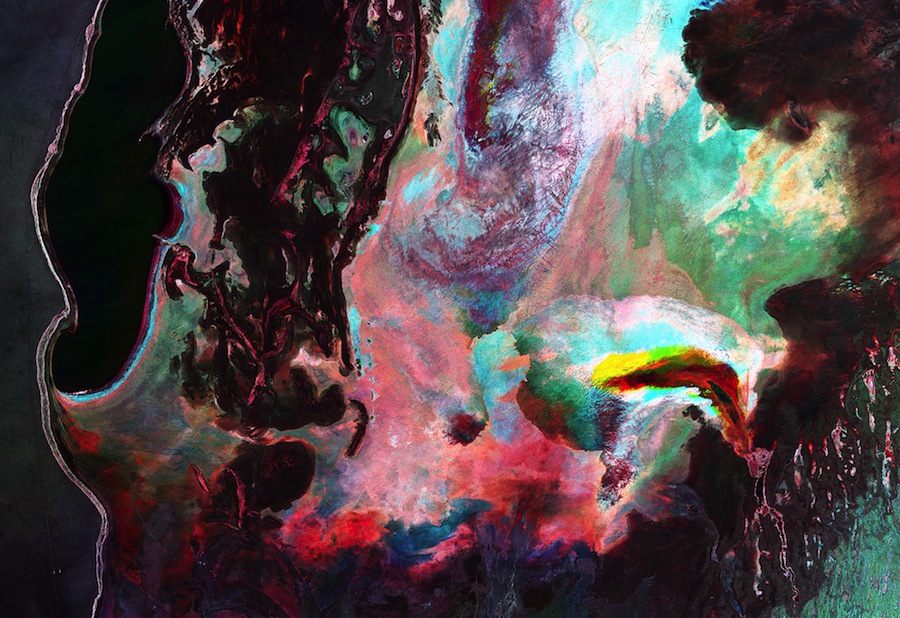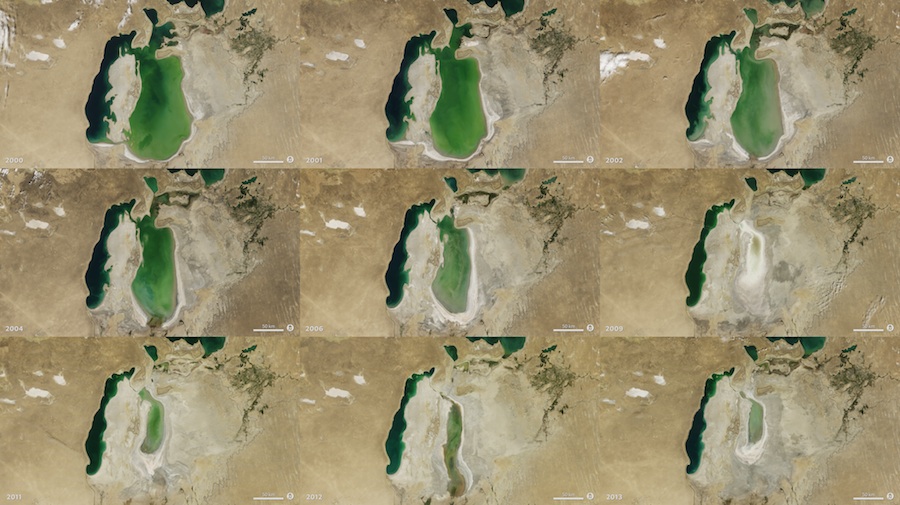Aral Sea Looks Like a Painting from Space

The Aral Sea is shrinking, leaving a dried-up white lakebed where there used to be blue water. But in the eyes of a radar satellite, the sea's shores look like a colorful abstract painting.
Once the world's fourth-largest inland body of water, Central Asia's Aral Sea has been starving ever since the two rivers that fed it were diverted for Soviet irrigation projects in the surrounding desert region 50 years ago. Since 1960, it's lost about 90 percent of its volume.
As the Aral Sea has gotten smaller, fisheries and local businesses have suffered. The desiccated lakebed is quite salty and laden with pollution from agricultural fertilizer and pesticides, which make dust storms an even worse public health problem.

This new image of the Aral Sea, which lies on the border between Kazakhstan and Uzbekistan, was created with radar data from the European Space Agency's (ESA) Sentinel-1A.
The image actually combines three separate radar scans: the red parts show data from Oct. 17 2014, the green from Dec. 28 2014 and blue from Feb. 14 2015. The blended colors between represent changes between these acquisitions.
The large dark area on the left side shows where water is still present. There's also a boomerang-shaped blob in the lower-right corner of the image, which ESA officials said shows where water flows into the parched seabed from a river.
There are some traces of human life visible in the image, too, including a road on the outside of the seabed in the lower-left corner, near dots representing some unidentified human-made structures.
Sign up for the Live Science daily newsletter now
Get the world’s most fascinating discoveries delivered straight to your inbox.
The Sentinel-1A satellite, which is coming up on its one-year anniversary in space, launched on April 3, 2014, to provide all-weather, day-or-night radar images of Earth.
Follow Megan Gannon on Twitter. Follow us @livescience, Facebook & Google+. Original article on Live Science.










